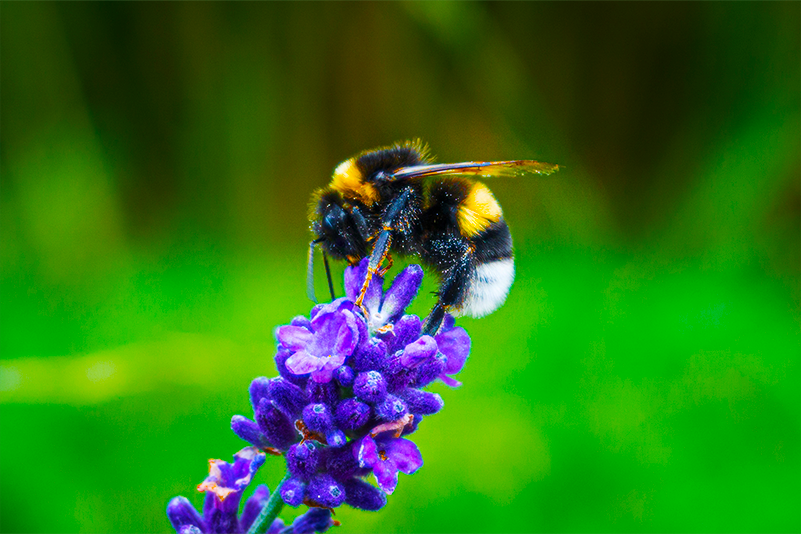
Bumblebee-friendly gardens
How to make a bumblebee-friendly garden
Bumblebees are important for pollinating our wildflowers and crops, but they are under threat, with habitat loss being a primary cause. But there are things you can do in your garden, no matter the size of it, to help make your garden bee-friendly…
Provide flowering plants from early spring to late autumn and winter
Make sure your garden has flowers that will bloom at different times of the year as bumblebees forage for nectar and pollen for much of their annual lifecycle. See our suggestions below for what you can grow throughout the year:
Late winter/Spring
Crocus, Primrose, Garlic Mustard, Sweet Rocket, Aubretia, Honesty, Phacelia, Hawthorn, Blackthorn, Willow species, Flowering currant, Native bluebells, Rhododendron*, Apple, Plum, Pear, Crab apple
Summer
Honeysuckle, Lavender, Red Valerian**, Hebe, Yarrow, Alliums, Nasturtiums, Strawberries, Raspberries, Tomatoes, Courgettes, Single flowered Dahlia species (will repeat flower if deadheaded until too cold, so continue into autumn in some areas), Salvia species, Pheasant berry, Single flowered varieties of clematis
Autumn/Winter
Ivy, Hyssop, Ice Plant, Sweet Scabious, Michaelmas Daisy, Christmas box, Mahonia, Lenten roses, Daphne
To find out more about bumblebee friendly plants, help with choosing plants you could add to your garden or find out how bumblebee friendly your garden is already, the Bumblebee Conservation Trust have developed a handy tool called BeeKind.
Grow flowers with different shaped flowers
Bumblebee species have different length tongues that are adapted to feed from different shaped flowers. For example, long tongued bumblebees prefer deep tube-shaped flowers such as foxgloves and short tongued bumblebees prefer short, open flowers, with nectar within easy reach, such as apple blossoms.
Plant flowers in clumps or clusters
Flowers of the same species which are clumped together will attract more bees than individual flowers dispersed throughout your garden.
Create a ‘bumblebee bath’
In a shaded area of your garden, near flowers, place a shallow dish on the ground and add a few rocks into the dish. Then add some clean water – make sure you don’t fully submerge the rocks. It’s important that the bumblebees have somewhere to perch as they drink and collect water.
Provide a nesting site
In a shaded area of your garden, place an upturned terra cotta pot into the ground and use a piece of slate/tile to cover any drainage holes to keep the rain out. Run a hose or pipe underground to the pot to act as a tunnel for the bumblebees. Then fill the pot with a generous handful of nesting material.
For advice on creating more naturalistic opportunities for all of our native bumblebees, the Bumblebee Conservation Trust have created a short animation.
For further advice on how you can help save bumblebees from further population declines, visit bumblebeeconservation.org
Provide Solitary bee nesting opportunities
Did you know we have around 270 species of solitary bee in the UK? These little bees will nest in a variety of habitats. The bee hotels that you will often find in garden centres are aimed at supporting these bees by providing places for them to create their nests.
Avoid using chemicals whenever possible
There is now quite a lot of evidence that many of the chemicals commonly used for weed control in gardens have negative impacts on our pollinators. Using hand tools and some good old-fashioned elbow grease is much kinder, plus you get the benefit of a free work out and a sun tan too!
*Avoid ponticum as this species is considered invasive
** Red Valerian can become quite invasive, if you put this species into our BeeKind tool it will deduct points from your score for this reason.

